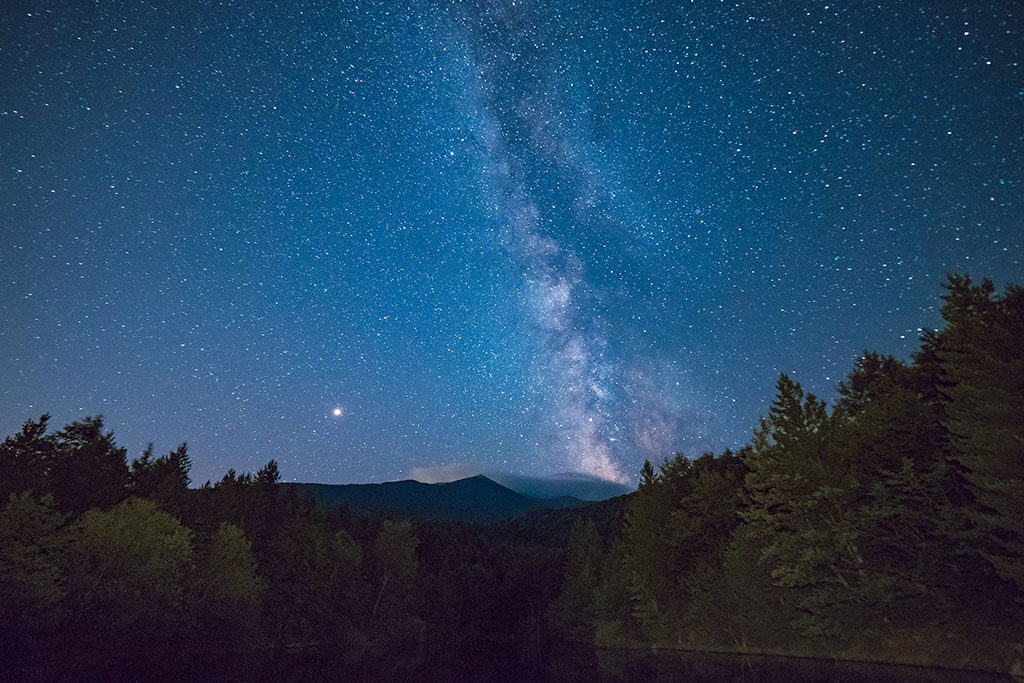
14
January
Riverwood Conservancy: An Introduction to Observational Astronomy
What star is that? How can I spot Orion’s Belt? How many planets can I see without a telescope?
Learn your way around the night sky. The Riverwood Conservancy, The Earthshine Astronomy and Space Science Organization and the Mississauga Centre of the Royal Astronomical Society of Canada are teaming up to offer a 4-week course on astronomy.
Upon completion the student will be able to identify the brighter stars and constellations.

7
January
RASC Hamilton: Hands On “Mad Science” Night – Cosmic Ray Detector
We have a special treat – we’re going to do some science and everyone gets to take part in the grand experiment. The audience will be divided into several teams and each team will construct a chamber that will reveal the presence of cosmic rays and other particles that make up our Universe.
Our guest Science Professor will be Ted Rudyk who will supervise the construction of your lab experiment and provide some insight about what you will witness when your lab experiment is ready to unveil.
This is going to be a ton of fun! Science is COOL!

16
December
Ylab Weekly Night at the DDO - Whatever project you want!
Come out and join Ylab for a maker night at the DDO.
Keep working on your robotics toy hack.
Get away from the rest of the world and work on some software (bring your own phone for Internet access. We're working on that.).
Bring another project. Maybe get some help on it.
Check out the latest on our advanced light sabre engineering.
See if you can get one of the 3D printers running.
Add to our collective strong backs and weak minds as we move some furniture around and do some work to get the place organised.

25
February
Sony Centre: An Evening with Neil deGrasse Tyson
Join Dr. Neil deGrasse Tyson for an evening of engaging conversation on science, exploration and the world as we know it.

31
March
Goldhawk Park Library: Is The Solar System Typical?
Over the last twenty years, we have discovered thousands of planets orbiting other stars. We are now in a position to analyse this population statistically, look for trends, and ask whether our Solar System is typical among the galaxy or whether it stands out as unique.

2
December
Ylab Maker Night at the DDO - Whatever project you want!
Come out and join Ylab for a maker night at the DDO.
Keep working on your robotics toy hack.
Get away from the rest of the world and work on some software (bring your own phone for Internet access. We're working on that.).
Bring another project. Maybe get some help on it.
Check out the latest on our advanced light sabre engineering.
See if you can get one of the 3D printers running.
Add to our collective strong backs and weak minds as we move some furniture around and do some work to get the place organised.

23
March
Beaches Library: The Cosmic Web
The galaxies we see in the universe are aligned along huge intersecting filaments. Using telescope observations and computer simulations, Alexander van Engelen of the Canadian Institute for Theoretical Astrophysics describes cosmologists' understanding of how these filaments formed after the Big Bang from a Universe that was initially very smooth.
Presented in collaboration with the Dunlap Institute for Astronomy & Astrophysics.

23
March
Don Mills Library: Misconceptions About the Big Bang
The Big Bang Theory-a crowning achievement of modern science-holds that the universe began expanding about 14 billion years ago from a very hot, dense state. The theory has been verified many times over, but there is still great uncertainty and confusion about what it says and doesn't say. Astronomer Michael Reid provides some answers.
Presented in collaboration with the Dunlap Institute for Astronomy & Astrophysics.

18
December
UofT Planetarium: Voyager’s Odyssey: A Small Probe’s Adventures into Interstellar Space
Showtimes: 7:00pm, 8:00pm, and 9:00pm
In 1977 two small probes, Voyager 1 and 2, were launched from Earth with a mission to study the outer solar system. Both spacecraft visited Jupiter and Saturn, and Voyager 2 passed by Uranus and Neptune, returning images to Earth which allowed us to make surprising discoveries about these distant planets. Now these probes are entering interstellar space, making them the furthest man-made objects from the Earth!

11
December
UofT Planetarium: Voyager’s Odyssey: A Small Probe’s Adventures into Interstellar Space
Showtimes: 7:00pm, 8:00pm, and 9:00pm
In 1977 two small probes, Voyager 1 and 2, were launched from Earth with a mission to study the outer solar system. Both spacecraft visited Jupiter and Saturn, and Voyager 2 passed by Uranus and Neptune, returning images to Earth which allowed us to make surprising discoveries about these distant planets. Now these probes are entering interstellar space, making them the furthest man-made objects from the Earth!
